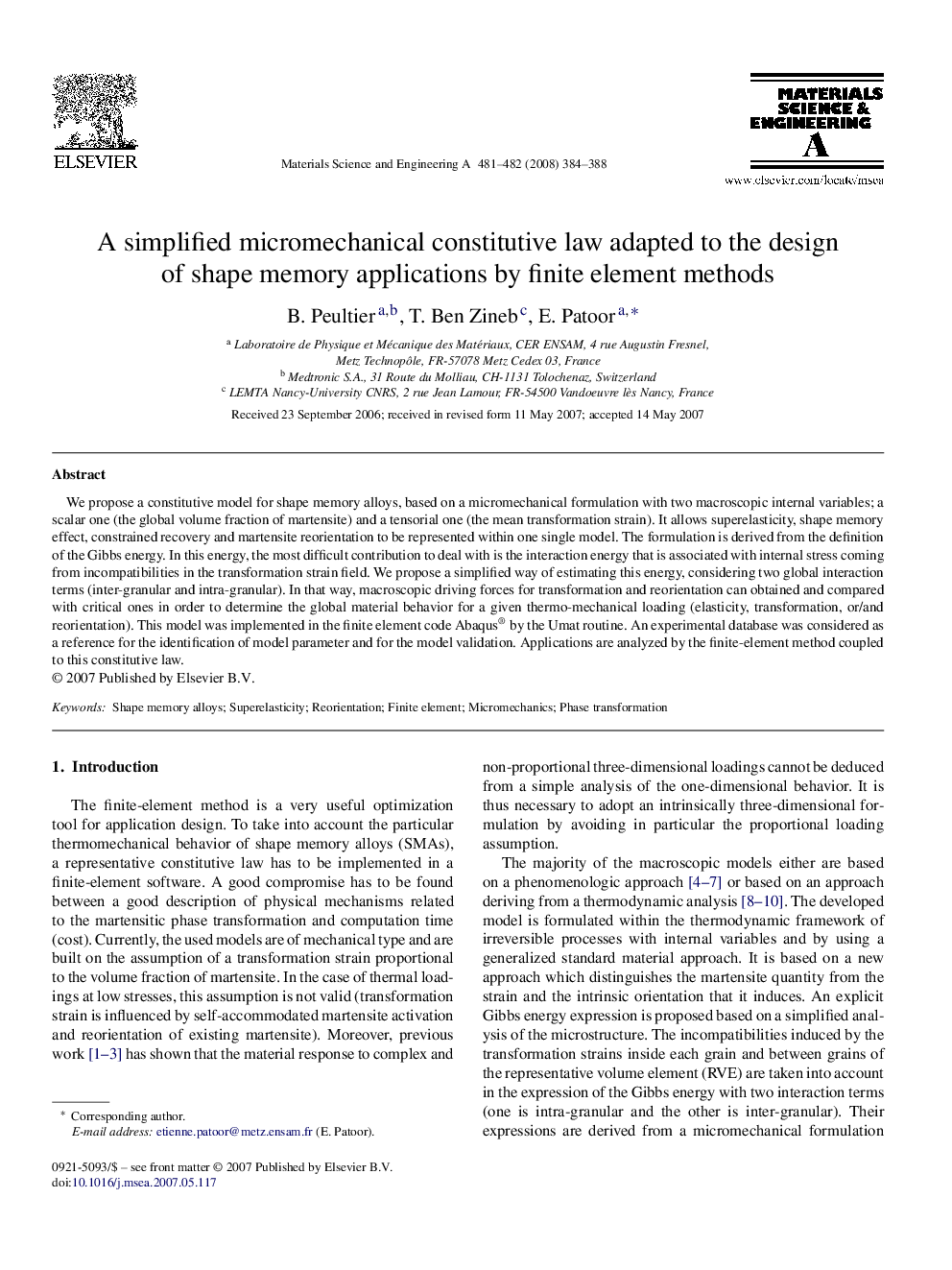| Article ID | Journal | Published Year | Pages | File Type |
|---|---|---|---|---|
| 1582513 | Materials Science and Engineering: A | 2008 | 5 Pages |
We propose a constitutive model for shape memory alloys, based on a micromechanical formulation with two macroscopic internal variables; a scalar one (the global volume fraction of martensite) and a tensorial one (the mean transformation strain). It allows superelasticity, shape memory effect, constrained recovery and martensite reorientation to be represented within one single model. The formulation is derived from the definition of the Gibbs energy. In this energy, the most difficult contribution to deal with is the interaction energy that is associated with internal stress coming from incompatibilities in the transformation strain field. We propose a simplified way of estimating this energy, considering two global interaction terms (inter-granular and intra-granular). In that way, macroscopic driving forces for transformation and reorientation can obtained and compared with critical ones in order to determine the global material behavior for a given thermo-mechanical loading (elasticity, transformation, or/and reorientation). This model was implemented in the finite element code Abaqus® by the Umat routine. An experimental database was considered as a reference for the identification of model parameter and for the model validation. Applications are analyzed by the finite-element method coupled to this constitutive law.
